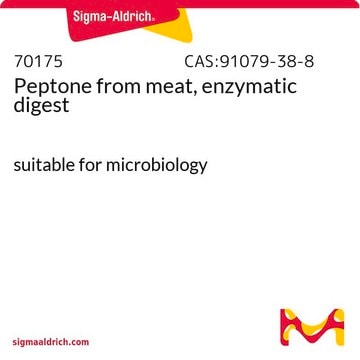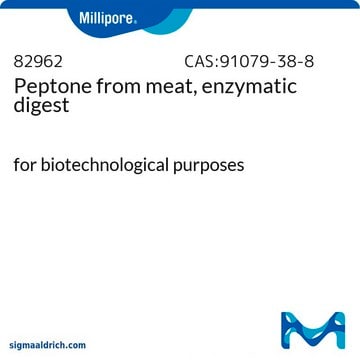81260
Poly(ethylene glycol)
average Mn 6,000, hydroxyl
Synonym(s):
Polyethylene glycol, PEG
About This Item
Recommended Products
product name
Poly(ethylene glycol), average Mn 6,000
form
flakes
mol wt
Mn 5,000-7,000
average Mn 6,000
pH
4.5-7.5
mp
60-63 °C
Ω-end
hydroxyl
α-end
hydroxyl
SMILES string
C(CO)O
InChI
1S/C2H6O2/c3-1-2-4/h3-4H,1-2H2
InChI key
LYCAIKOWRPUZTN-UHFFFAOYSA-N
Looking for similar products? Visit Product Comparison Guide
Related Categories
General description
Application
Photopolymerized PEG hydrogels have emerging applications in the fabrication of bioactive and immunoisolating barriers for encapsulation of cells.
related product
Storage Class Code
11 - Combustible Solids
WGK
WGK 1
Flash Point(F)
Not applicable
Flash Point(C)
Not applicable
Personal Protective Equipment
Certificates of Analysis (COA)
Search for Certificates of Analysis (COA) by entering the products Lot/Batch Number. Lot and Batch Numbers can be found on a product’s label following the words ‘Lot’ or ‘Batch’.
Already Own This Product?
Find documentation for the products that you have recently purchased in the Document Library.
Customers Also Viewed
Our team of scientists has experience in all areas of research including Life Science, Material Science, Chemical Synthesis, Chromatography, Analytical and many others.
Contact Technical Service





